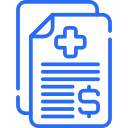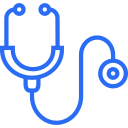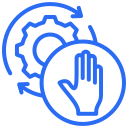
ICD-10 Updates 2026: Prep Your Practice for New Codes
June 22, 2025
Different Healthcare Billing Solutions
July 7, 2025The International Classification of Diseases (ICD) is a globally recognized system developed by the World Health Organization (WHO) to standardize the coding of diseases, symptoms, and procedures for medical billing, research, and health statistics. For medical billing companies, understanding ICD codes is critical to ensuring accurate claims, compliance, and efficient reimbursement processes.
ICD codes are alphanumeric codes used to classify diagnoses, symptoms, and causes of injury or death. They provide a universal language for healthcare providers, insurers, and researchers to document and analyze health conditions consistently across the globe. The system is regularly updated to reflect advancements in medical knowledge, with ICD-10 currently in widespread use and ICD-11 officially in effect since January 1, 2022, for a transitional period.
ICD-10
The 10th revision of the ICD, implemented globally starting in 1993 and in the U.S. in 2015, contains over 69,000 diagnosis codes (ICD-10-CM) and 70,000 procedure codes (ICD-10-PCS in the U.S.). It uses a structure of 3 to 7 characters:
-
-
-
First character: A letter indicating the disease category (e.g., “J” for respiratory diseases).
-
Second and third characters: Numbers specifying the disease type.
-
Decimal point followed by additional characters: Provide details on cause, severity, or location (e.g., J45.0 for allergic asthma).
-
-
ICD-11
Adopted in 2019 and effective from 2022, ICD-11 introduces a more flexible structure with 4 to 6 characters, where the second character is always a letter. It integrates advanced terminologies and allows for combining codes to describe complex conditions. For instance, allergic asthma is coded as CA23.0 in ICD-11, compared to J45.0 in ICD-10. The transition period allows both systems to coexist until 2027 in some regions, like Germany.
Key ICD Codes Organized by Disease
ICD codes are grouped into chapters based on disease categories. Below is an overview of key chapters in ICD-10-CM and examples of diseases with their respective codes, based on the 2025 updates effective from October 1, 2024.
1. Infectious and Parasitic Diseases (A00–B99)
Covers bacterial, viral, and parasitic infections.
-
-
-
A00.0: Cholera due to Vibrio cholerae 01, biovar cholerae.
-
B20: Human immunodeficiency virus (HIV) disease.
-
U07.1: COVID-19, virus identified (introduced in 2020).
-
-
2. Neoplasms (C00–D49)
Includes cancers and benign tumors.
-
-
-
C34.90: Malignant neoplasm of unspecified part of bronchus or lung.
-
D12.6: Benign neoplasm of colon.
-
-
3. Endocrine, Nutritional, and Metabolic Diseases (E00–E89)
Covers diabetes, thyroid disorders, and metabolic conditions.
-
-
-
E10.9: Type 1 diabetes mellitus without complications.
-
E66.01: Morbid obesity due to excess calories.
-
-
4. Mental and Behavioral Disorders (F01–F99)
Includes psychiatric and psychological conditions.
-
-
-
F32.0: Major depressive disorder, single episode, mild.
-
F41.1: Generalized anxiety disorder.
-
-
5. Diseases of the Circulatory System (I00–I99)
Covers heart and vascular conditions.
-
-
-
I21.09: ST elevation (STEMI) myocardial infarction, unspecified site.
-
I10: Essential (primary) hypertension.
-
-
6. Diseases of the Respiratory System (J00–J99)
Includes asthma, COPD, and infections.
-
-
-
J45.901: Unspecified asthma with acute exacerbation.
-
J12.89: Other viral pneumonia.
-
-
7. Diseases of the Digestive System (K00–K95)
Covers gastrointestinal disorders.
-
-
-
K50.90: Crohn’s disease, unspecified, without complications.
-
K21.9: Gastro-esophageal reflux disease without esophagitis.
-
-
8. External Causes of Morbidity (V00–Y99)
Describes injuries or external factors.
-
-
-
V89.2: Person injured in unspecified motor-vehicle accident, traffic.
-
Y04.0: Assault by bodily force, at home.
-
-
Note: This is not an exhaustive list. For a complete database, visit the CDC’s ICD-10-CM Browser Tool or ICD10Data.com.
How to Look Up ICD Codes
Healthcare providers and billers can access ICD codes through:
-
-
-
CDC’s ICD-10-CM Browser Tool:
-
-
A free, searchable database for current codes.
-
-
-
ICD10Data.com:
-
-
A user-friendly commercial site for navigating codes by category.
-
-
-
WHO’s ICD-11 Portal:
-
-
Offers access to the latest ICD-11 codes and guidelines.
For example, to find the code for type 2 diabetes:
-
-
-
Visit ICD10Data.com.
-
Navigate to “Endocrine, nutritional and metabolic diseases” (E00–E89).
-
Select “Diabetes mellitus” (E08–E13) and find E11.9 for type 2 diabetes without complications.
-
-
Best Practices for Medical Billing Companies
To leverage ICD codes effectively:
-
-
-
Stay updated on annual code changes (e.g., FY 2025 codes effective October 1, 2024).
-
Invest in billing software with built-in ICD code libraries to reduce errors.
-
Regularly review claims for coding accuracy to minimize denials.
-
Begin training on ICD-11 structures to ensure a smooth transition by 2027.
-
-
Conclusion
ICD codes are the cornerstone of medical billing, enabling accurate documentation, reimbursement, and health data analysis. By understanding the structure and application of ICD-10 and preparing for ICD-11, medical billing companies can enhance efficiency, ensure compliance, and support healthcare providers in delivering quality care. For the latest codes and guidelines, rely on trusted resources like the CDC, WHO, or ICD10Data.com. Stay proactive in training and technology adoption to navigate the evolving landscape of medical coding successfully.

Learn more about ICD-10 at ICD-10 Updates 2026: Prep Your Practice for New Codes
Have questions? visit Medical Billing FAQs















